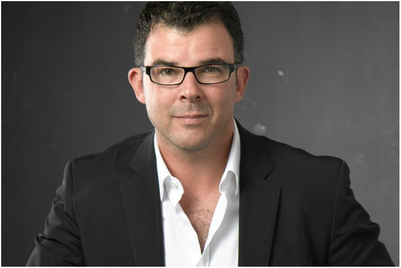
Patrick Rona, chief digital officer, Asia Pacific, McCann Worldgroup presented on the second day of Spikes Asia. He replaced AKQA's Rei Inamoto, who was scheduled to speak at that time. He began by saying, "I'm a digital guy. One criticism we receive is that digital has been functional (in nature) compared to traditional (which is creative). But we have come a long way."
He followed this by defining the word beauty, 'The quality present in a thing or person that gives intense pleasure or deep satisfaction to the mind, whether arising from sensory manifestations (as shape, colour, sound, etc.), a meaningful design or pattern, or something else (as a personality in which high spiritual qualities are manifest).'
He then described what he believed is meaning of digital beauty. "In digital, it means the quality in an experience, that gives us intense pleasure, deep satisfaction of rich exchange of value."
With the help of a timeline, he then explained how digital has come a long way.
1991: Sir Tim Berners-Lee's rolled out the first website
1994: AT&T released the first banner ad, Amazon.com launched
1998: Google was launched
2004: Burger King launched the 'Subservient Chicken'. This was the first time a creative agency tried customising videos
29 June 2007: The launch of the iPhone. We were predicting the day of the mobile, this took it to the next level.
2009: Paris Metro AR app
2010: Old Spice age of content marketing was upon us. Also, with Angry Birds the idea of gamification was introduced.
2013: A small McCann plug, but Dumb Ways to Die showed how all touch points could be combined for the first time.
He followed this with a recent campaign done for American Greetings in 2014 for Mother's Day.
He followed his explanation of digital coming a long way, with how beautiful experiences could be crafted.
He said, "You need customer obsession. You need big and real time data to get the stuff they want. You need tools and processes to understand our audience. We need to understand more than just the purchase journey. Some of the processes we need to understand are simple. Some are tough."
He backed this with a case done by McCann MRM for Intel.
He continued, "Data is the new precious stone. It truly is. But you need to look beyond data we know and we get. We need to look at unexpected sources. Fast Company has listed Inventure as one such company that does that and is listed in the world's 50 most innovative companies. Inventure provides loans to people in India. It could be loans as low as US$ 5 (Approx Rs 330). Since these guys have almost no credit history, they look at the social media profile, track them using data from the calls they make, and give out loans. They're right 85 per cent of the time. So there are gems of data available. "
Rona further spoke about connect consumer experiences that matter with the help of three case studies.
Singapore Red Cross
"This drove blood donations using social media and technology."
National Gallery Singapore
"Singapore recently celebrated its 50th anniversary. Companies and brands got involved. This is how National Gallery Singapore played its part."
Tiger Air
"Tiger Air was the most hated airline in Australia prior to this Loyalty plan."
Rona ended his session with a brief explanation of where the industry is heading next. He said, "I'm not predicting where the industry will head in 2020. But I'll tell you four things you need to think about. We know there will be no line between digital and physical. Nearly everything is already digital."
He further stated that earned media is also paid media. A video requires some sort of paid media to be made viral.
"We've heard of programmatic buying, but we need programmatic creative. That's entirely to creativity to display ads based on programmatic data," he said, adding that video content will be created on the move.
Technology is shaping human behaviour; whether it is wearables, internet of things or something else, my kids behave very differently to me. They watch an hour of traditional media in a month.
The e-commerce loop. Different divisions need to come together as a consumer goes from television ad, to a YouTube pre-roll ad, and make the purchase decision in seconds.



.png&h=268&w=401&q=100&v=20250320&c=1)

.jpg&h=268&w=401&q=100&v=20250320&c=1)




